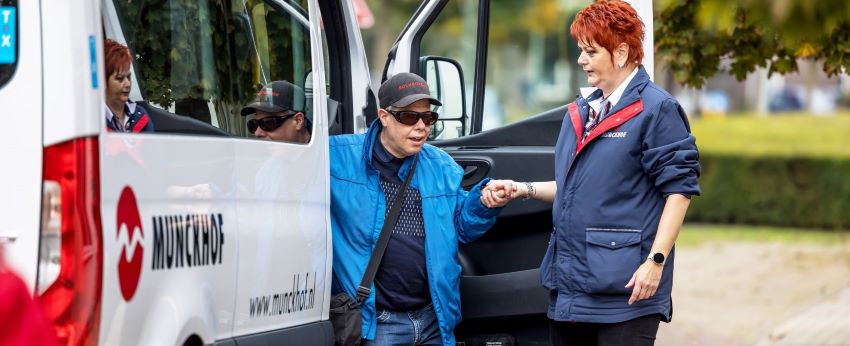Munckhof, one of the largest passenger transport companies in the Netherlands, has been using the new Cabman MDT, the successor to the Boordcomputer Taxi (BCT), since the beginning of this year. More than a hundred vehicles in Amsterdam are now using the updated on-board computer. The drivers working with the MDT are enthusiastic.
“I hear nothing but positive stories,” says John Hellegers, Automation Manager at Munckhof. “The MDT has the same fine and familiar functions that the BCT already offered, but it has a much finer screen. It is bigger and easier to read.
Munckhof’s choice of Cabman’s data terminal is no surprise. The passenger transport company, based in Horst, Limburg, has used the Cabman BCT in the past. “We were always very happy with it, because Cabman BCT is very stable and durable. That’s why we chose the Cabman MDT again,” says Hellegers.
Data
The importance of the Cabman data terminals can be seen in the day-to-day operation of the company. “Without a working terminal, the dispatcher has to schedule out the vehicle. Giving orders to the driver verbally is a hopeless task. In addition, we would be missing important data for external and internal reports. A driver would then have to resort to recording shift information on an old-fashioned trip sheet.”
The data provided by the Cabman MDT is also very important to Munckhof as an organisation. In fact, the transport company uses the data in a number of different ways. “One example of how we use the data is that, for certain projects, the distance from the requested address to the location of the address where the trip actually stopped or started is recorded,” explains Hellegers. “If the distance between these locations is greater than allowed, the trip is classified as a non-data trip. Another example is that we use the data generated for internal reporting, to achieve the best possible planning or to report on our digital footprint.”
CAN interface
Because data is important to Munckhof in several areas, the passenger transport company plans to equip all vehicles equipped with the MDT with a CAN interface in the near future.”The project we started in Amsterdam is being carried out with an all-electric fleet.We want to add another CAN interface to the MDT so that, among other things, we can read the battery status from the vehicle.This will make planning even easier and allow us to use the vehicle more efficiently.”
This is how Munckhof continues to innovate. According to Hellegers, this is also necessary.”The labour shortage in the industry is getting worse.This makes optimal planning even more important, because you want to use your drivers as effectively as possible.I therefore expect that this will be increasingly taken over by intelligent solutions in the future.
Hellegers also sees major challenges in the electrification of transport. “About 35 per cent of the vehicles we use for passenger transport are electric at the moment.
In the past, I always thought that more hydrogen vehicles would be chosen, but now we see that basically everything is going to electric vehicles. Efficient planning and insight into data from on-board computers, together with vehicle signals, is therefore very important”.
Munckhof was founded in 1927 in Horst by Hein van den Munckhof. Munckhof started out with a 14-seater bus transporting people between various villages in North Limburg.
In more than 95 years, the company has grown into one of the largest passenger transport companies in the Netherlands, with no fewer than 25 branches throughout the country, 1,400 of its own vehicles on the road every day, and a further 1,500 vehicles under contract. Munckhof’s head office is still in Horst.
This article was originally published on Mobiliteit.nl. Photo: Munckhof.
